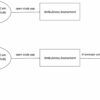Overall, Matthew Burnett’s medical school experience has been wonderful. But the fourth-year medical student at A.T. Still University Kirksville College of Osteopathic Medicine understands his experience does not represent all medical students.
“I recognize that it can be very challenging for my peers with different learning styles, support systems and backgrounds,” Burnett said. “This is true regardless of their desire to help others, career interests or capability to succeed in medicine.”
Burnett has been part of a large-scale study aimed at improving medical students’ well-being led by Yoi Tibbetts, research assistant professor at the University of Virginia School of Education and Human Development and research director of the Motivate Lab.
Tibbetts, who studies motivation and achievement in higher education, turned his research focus to medical school students after a colleague working with the American Association of Colleges of Osteopathic Medicine shared the plight of medical school students and doctors.
“I saw the alarming trends of burnout rates and other psychological symptoms that are much more prevalent among doctors relative to the general population,” Tibbetts said. “So, my colleague and I put our heads together to figure out how we can support the physician workforce.”
Tibbetts’ team collected and reviewed data that showed 29% of students in the first semester of their first year of osteopathic medical school reported feeling moderately to severely burned out. By the time they graduated, the number was nearly two-thirds.
Of the students reporting burnout, 68% said they also had moderate to severe psychological symptoms associated with psychiatric disorders. Though these were students studying to become an osteopathic doctor or D.O., Tibbetts believes there are likely similar trends for students pursuing their allopathic medical, or M.D. degrees.
“What is happening in medical school that is more than doubling the burnout rate from entering to exiting?” Tibbetts asked. “This is the problem that we’re trying to solve.”
Measuring learning mindsets
In his work with undergraduate students, Tibbetts and his Motivate Lab colleagues have shown that elements of learning mindsets—like growth mindset, purpose and relevance, and sense of belonging—are related to academic success and student well-being.
“We know that through interventions, through changes to the educational context, that we can improve learning mindsets,” Tibbetts said. “We can support a student to feel more like they belong, or to perceive more purpose and relevance about what they are studying.”
Tibbetts and his colleagues wanted to know if what was true for undergraduates would also be true for medical school students, so they surveyed 6,622 students from across the country.
The results, published in June in JAMA Network Open, were clear.
The more growth mindset students had, the more they flourished. The more resilience, purpose and relevance they had, the lower their burnout and psychological symptoms.
“The more uncertain a student was about whether they belonged, the more burned out they were and the more psychological symptoms they reported,” Tibbetts said. “So, the belonging question is more like, “Hey, do you ever wonder if you don’t belong?'”
Tibbetts looked at the findings for students from historically marginalized communities, including first-generation students and students of color. The data showed they experience medical school differently.
“Our data shows students from historically marginalized communities are reporting higher growth mindset, more purpose and relevance, less belonging uncertainty, slightly higher flourishing, resilience, lower levels of burnout, lower levels of psychological symptoms,” Tibbetts said. “Furthermore, our research shows that while supporting learning mindsets is beneficial, on average, for all students, they are particularly powerful for supporting the well-being of (osteopathic medicine) students from historically underserved backgrounds.”
The study showed students from historically marginalized backgrounds are coming in with more non-cognitive competencies than their peers.
“They are clearly not coming in with a deficit in these areas, which is often assumed,” Tibbetts said. “They’re coming in with a lot of assets that we can build upon.”
Improving well-being
Now, the researchers are testing ways to make educational environments more supportive.
“We think by shifting the learning context to be more motivationally supportive, we’ll be helping students’ well-being and ill-being outcomes trend in the right direction,” Tibbetts said.
The team is currently running an intervention with 150 teaching faculty at osteopathic medical schools to teach them how to create a learning context that supports student growth mindset, purpose and relevance, and belonging. Those faculty members will engage about 17,400 students this year.
“We’re not going to solve this issue by going in and trying to target individual students, for sure,” Tibbetts said. “We need to target the system.”
More information:
Yoi Tibbetts et al, Learning Mindsets and Well-Being and Ill-Being Among Osteopathic Medical Students, JAMA Network Open (2024). DOI: 10.1001/jamanetworkopen.2024.18090
Provided by
University of Virginia
Citation:
Learning mindset could be key to addressing medical students’ alarming burnout (2024, September 19)



